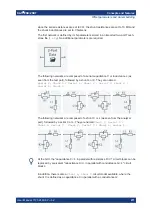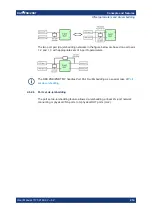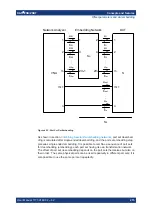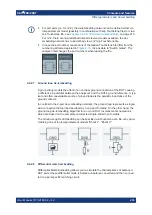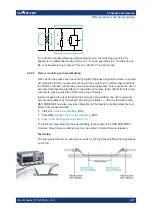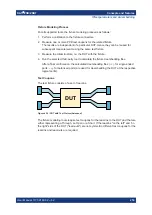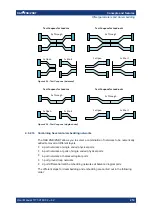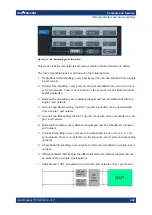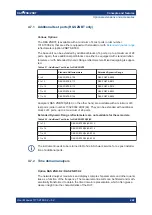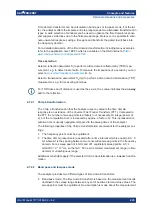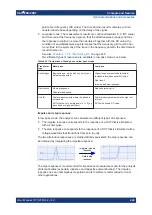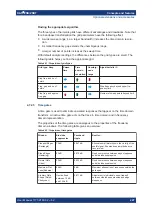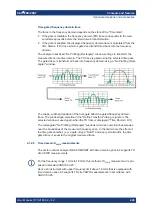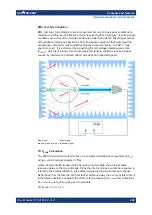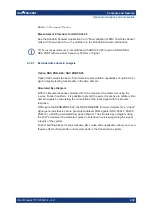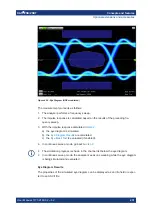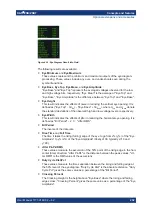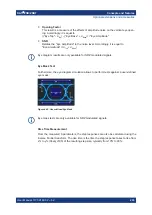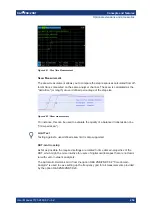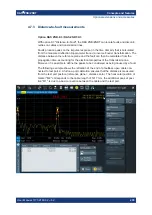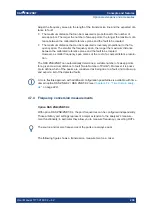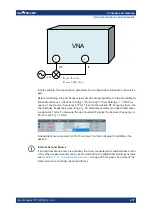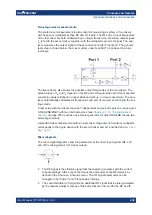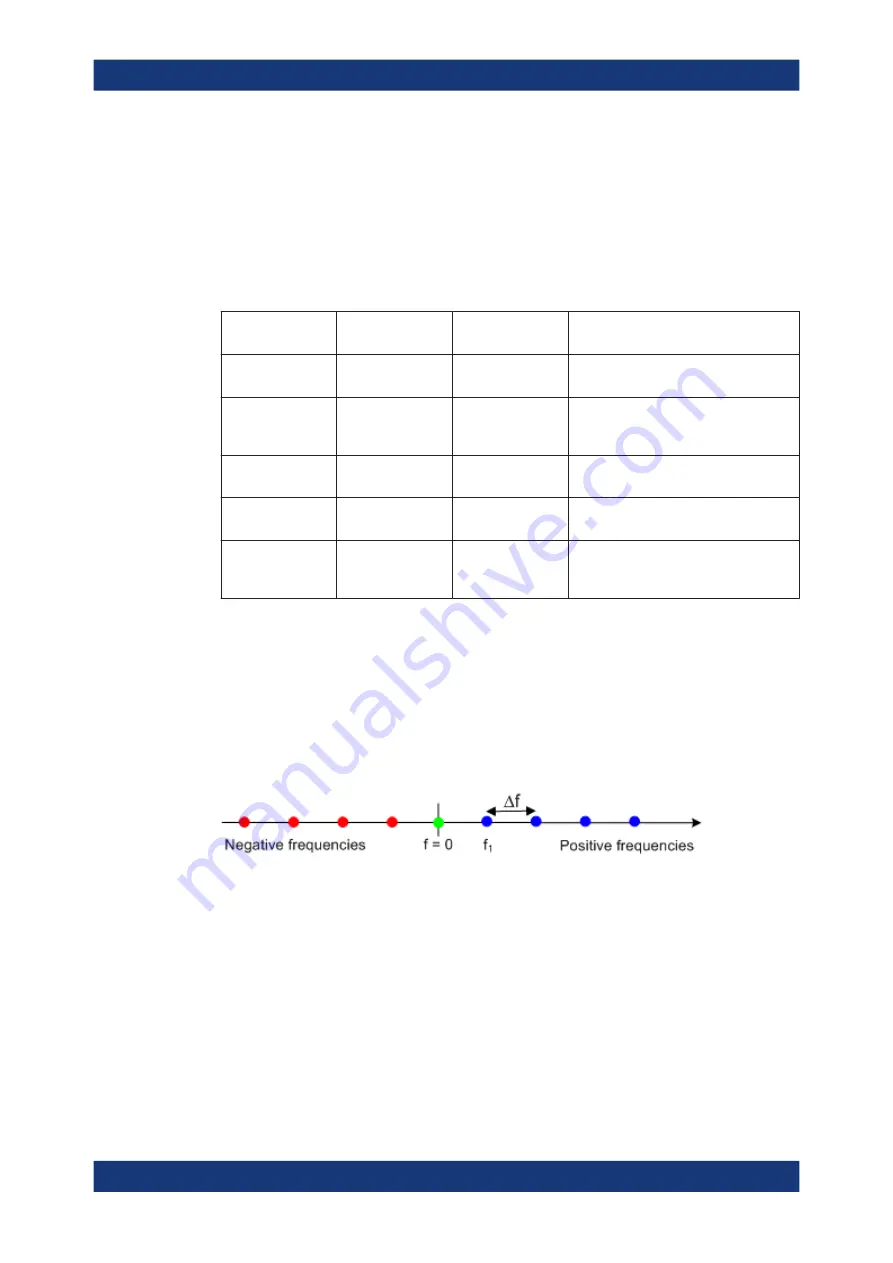
Concepts and features
R&S
®
ZNB/ZNBT
225
User Manual 1173.9163.02 ─ 62
4.7.2.3
Windows in the frequency domain
The finite sweep range in a frequency domain measurement with the discontinuous
transitions at the start and stop frequency broadens the impulses and causes side
lobes (ringing) in the time domain response. The windows offered in the "Define Trans-
form" dialog can reduce this effect and optimize the time domain response. The win-
dows have the following characteristics:
Table 4-20: Properties of frequency windows
Window
Side lobe sup-
pression
Relative impulse
width
Best for...
No Profiling (Rect-
angle)
13 dB
1
–
Low First Side lobe
(Hamming)
43 dB
1.4
Response resolution: separation of
closely spaced responses with compara-
ble amplitude
Normal Profile
(Hann)
32 dB
1.6
Good compromise between pulse width
and side lobe suppression
Steep Falloff (Boh-
man)
46 dB
1.9
Dynamic range: separation of distant
responses with different amplitude
Arbitrary Side lobes
(Dolph-Chebychev)
User defined
between 10 dB and
120 dB
1.2 (at 32 dB side
lobe suppression)
Adjustment to individual needs; tradeoff
between side lobe suppression and
impulse width
4.7.2.4
Harmonic grid
A harmonic grid is formed by a set of equidistant frequency points f
i
(i = 1...n) with
spacing Δf and the additional condition that f
1
= Δf. In other words, all frequencies f
i
are
set to harmonics of the start frequency f
1
.
If a harmonic grid, including the DC value (f = 0), is mirrored to the negative frequency
range, the result is again an equidistant grid.
The point symmetry with respect to the DC value makes harmonic grids suitable for
lowpass time domain transformations.
Visualization of the harmonic grid algorithms
The R&S
ZNB/ZNBT provides three different algorithms for harmonic grid calculation.
The three harmonic grids have the following characteristics:
●
Keep "Stop Frequency and Number of Points" means that the stop frequency and
the number of sweep points is maintained. The sweep points are redistributed
across the range between the minimum frequency of the analyzer and the stop fre-
quency; the step width can be increased.
Optional extensions and accessories

